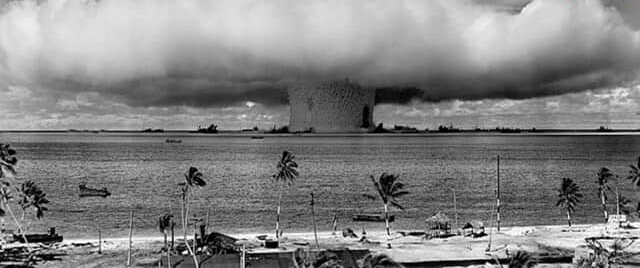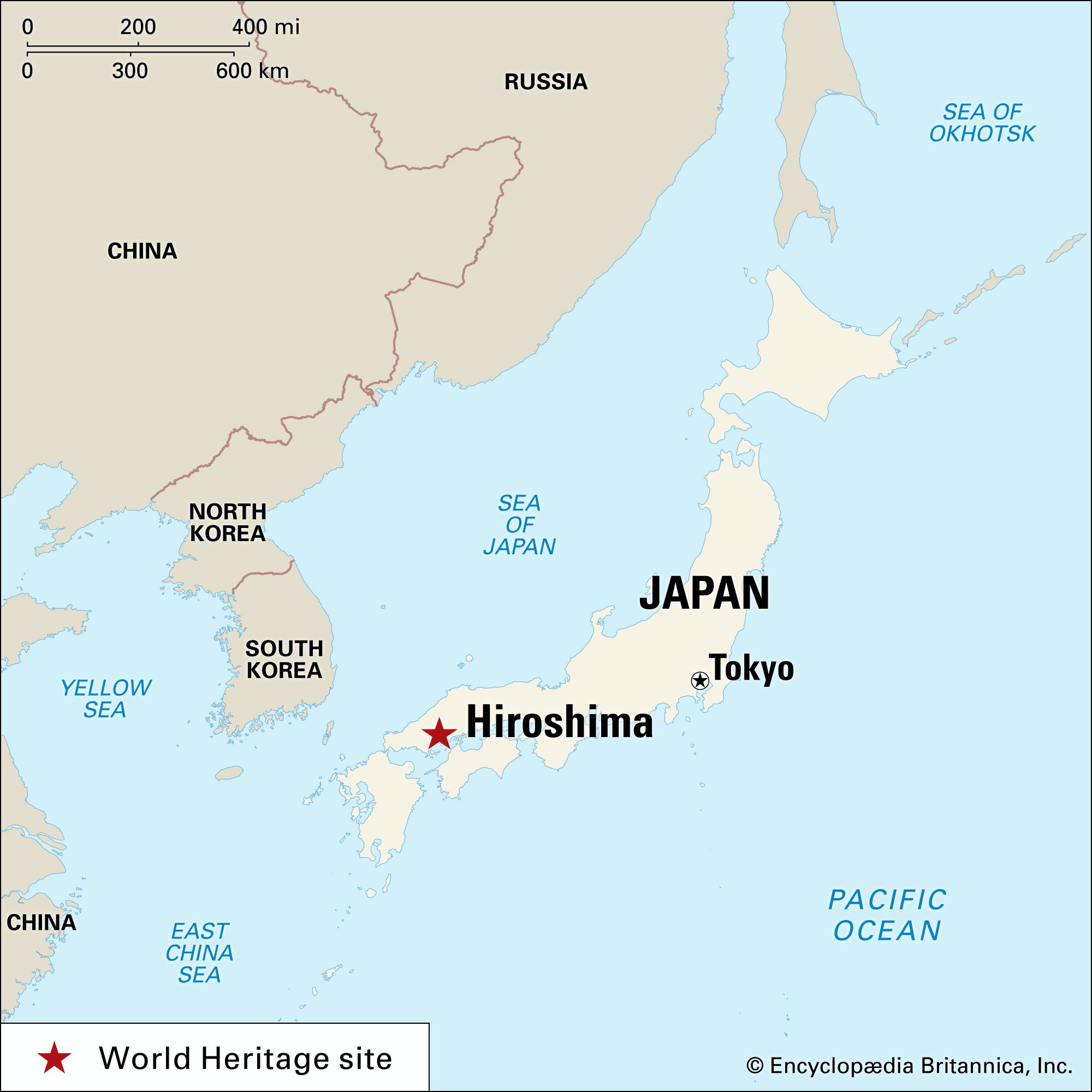
Disclaimer: Copyright infringement not intended.
Context
The historical and cultural impact of the mushroom cloud, tracing its significance from its first appearance during the Trinity test, the inaugural atomic bomb experiment in 1945, to its portrayal in various forms of media and popular culture.
Details
- The iconic mushroom cloud, associated with nuclear explosions, has taken on multifaceted meanings over time.
- It emerged as a symbol of the atomic age after witnesses described the Trinity test in various evocative ways.
- The rapid progression of its symbolism, from awe to terror, encapsulates the complex emotions elicited by the atomic bomb.
- The mushroom cloud's journey from Armageddon to popular culture is a testament to its profound impact on society.
The Mushroom Cloud as a Symbol
- Witnesses' descriptions of the Trinity test included comparisons to a chimney, parasol, raspberry, and "convoluting brain."
- Physicist Enrico Fermi likened the rising cloud to a mushroom, establishing its enduring association with nuclear explosions.
- The mushroom cloud quickly became a shorthand symbol representing the watershed moment of the atomic age.
Duality of Meaning
- The mushroom cloud encapsulated a duality of wonder and horror, reflecting military pride and godlike destruction.
- Its formidable presence in the sky became a signature of the bomb's power.
- Co-pilot of the Enola Gay bomber's poignant reaction, "My God, what have we done?," and Oppenheimer's quote from the Bhagavad Gita, "Now I am become Death," epitomized the complex emotions.

Incorporation into Popular Culture
- The mushroom cloud's novelty led to its incorporation into popular culture.
- Swimsuits named "Bikini" and beauty queens as "Miss Atomic Bomb" demonstrated its influence.
- Las Vegas Chamber of Commerce offered calendars for observing mushroom clouds.
Sci-Fi Movies and Visual Depictions
- The 1950s sci-fi era explored deadly possibilities of the Atomic Age.
- Mushroom clouds depicted as modern Pandora's boxes, representing anxiety about arms race, radiation, and hydrogen bomb.
- Movies like "Five" (1951) used the cloud to symbolize the erasure of civilization.
Kubrick's Satirical Take
- Stanley Kubrick's "Dr. Strangelove" used the mushroom cloud ironically.
- Vera Lynn's "We'll Meet Again" paired with cloud footage redirected focus to those in power.
- The satire critiqued absurd game-theory strategies and vanities tied to nuclear power.
Shifting Meanings Over Time
- President Lyndon B. Johnson's campaign ad "Daisy" emphasized the mushroom cloud's dire implications.
- The 1980s portrayed global nuclear war's horrors, reconnecting the cloud with human suffering.
- Blockbusters featured mushroom clouds as special effects, representing disaster, action, and spectacle.
About Hiroshima

Disclaimer: Copyright infringement not intended.
- Hiroshima, a city in Japan, holds profound historical significance as the target of the first wartime use of an atomic bomb during World War II.
- The events surrounding the bombing of Hiroshima on August 6, 1945, have left an indelible mark on global history and collective memory.
Background and Context
- Hiroshima was a significant military and industrial center for Japan during World War II.
- The city housed military facilities, factories, and communication centers vital to Japan's war effort.
- The decision to use atomic bombs was driven by the desire to hasten Japan's surrender and end the war.
The Bombing of Hiroshima
- On August 6, 1945, the American bomber plane "Enola Gay" dropped the atomic bomb named "Little Boy" on Hiroshima.
- The bomb detonated approximately 1,900 feet above the city, releasing an immense amount of energy in the form of heat, blast, and radiation.
- The explosion instantly killed tens of thousands of people and caused widespread destruction, leveling buildings and creating a shockwave felt for miles.
Immediate Aftermath
- The explosion generated a firestorm that engulfed large parts of the city, exacerbating the destruction.
- Survivors, known as "hibakusha," faced severe injuries, burns, and exposure to radiation.
- Communication and transportation infrastructure were severely disrupted, hampering relief efforts.
Humanitarian Crisis and Response
- The immediate aftermath of the bombing resulted in a humanitarian catastrophe, with hospitals overwhelmed and resources scarce.
- International aid and medical relief were slow to arrive due to Japan's isolation during the war.
- Survivors, rescue workers, and medical personnel faced unprecedented challenges in providing care and assistance.
Long-Term Impact and Consequences
- The bombing of Hiroshima had far-reaching consequences, both immediate and long-term.
- The immediate death toll was estimated at around 140,000, with many more suffering from injuries and radiation-related illnesses.
- The bombing raised ethical and moral questions about the use of nuclear weapons and their devastating effects on civilian populations.
End of World War II
- The bombing of Hiroshima and a second atomic bomb dropped on Nagasaki three days later prompted Japan's surrender on August 15, 1945.
- The bombings marked the conclusion of World War II and led to the beginning of a new era of nuclear weaponry and Cold War tensions.
Legacy and Commemoration
- Hiroshima serves as a poignant reminder of the devastating potential of nuclear weapons and the horrors of war.
- The Hiroshima Peace Memorial, also known as the Genbaku Dome, stands as a UNESCO World Heritage Site and a symbol of the city's resilience and commitment to peace.
- The annual Hiroshima Peace Memorial Ceremony is held on August 6 to commemorate the victims and advocate for nuclear disarmament.
|
PRACTICE QUESTION
Q) Analyze the dual nature of the mushroom cloud's symbolism, its impact on public perception, and its role in shaping historical events. (150 words)
|

https://indianexpress.com/article/explained/explained-culture/hiroshima-mushroom-cloud-atom-bomb-8879354/





